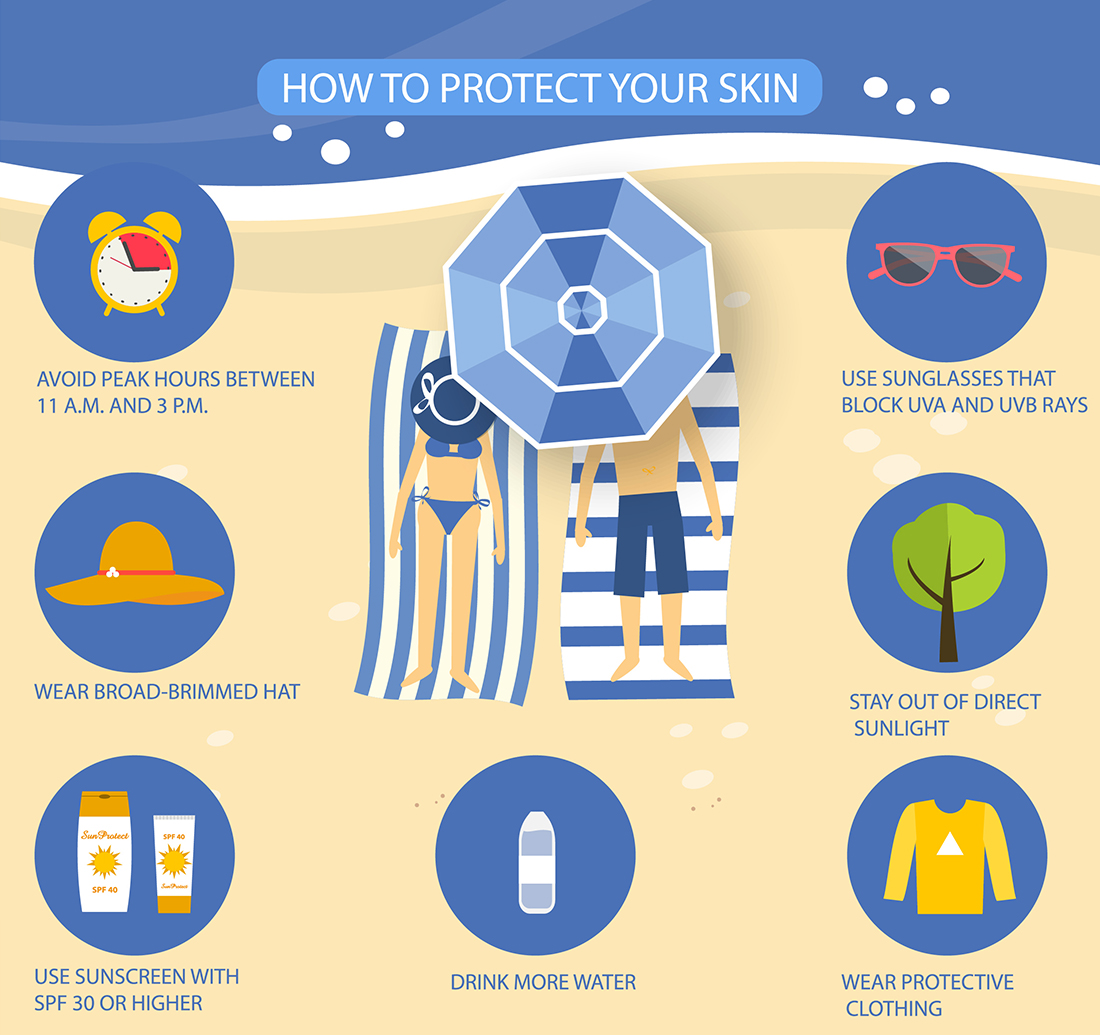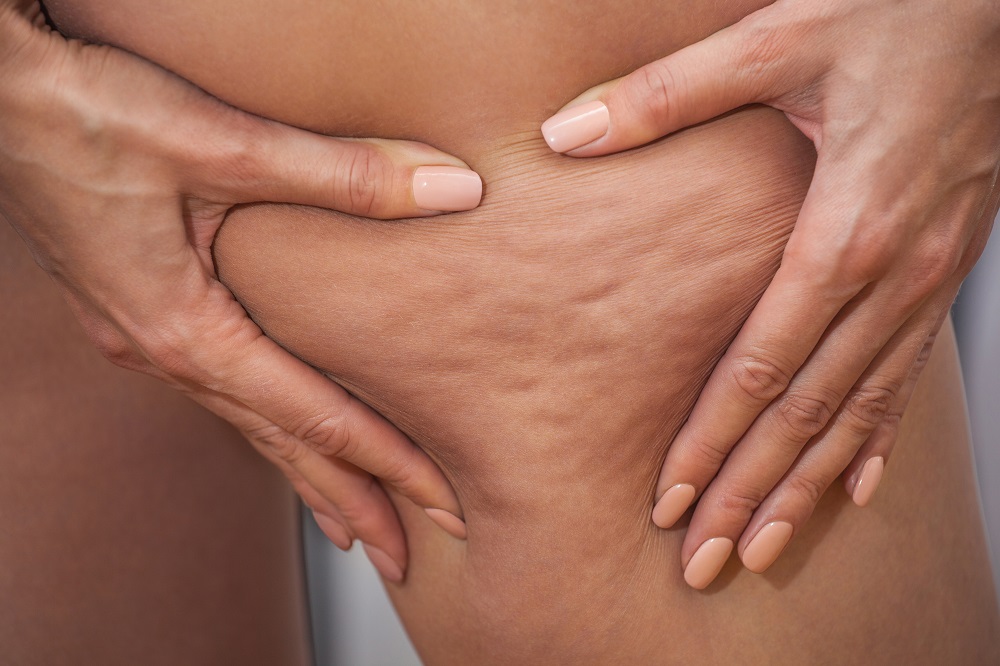
No matter how much you try to give your skin everything it needs, you will likely still come across various skin issues throughout your life.
From wrinkles to acne to dark spots, here are six of the most common skin issues experienced, as well as steps you can take to deal with them.
Fine Lines and Wrinkles
While fine lines and wrinkles may be an inevitable part of life, they are still usually something you want to avoid for as long as possible.
Many think that aging is solely responsible for wrinkles and fine lines, but this isn’t actually true…
Did you know that sun exposure accounts for up to 80% of facial wrinkles?
This means that by using adequate sun protection, you will be able to prevent the majority of your wrinkles from forming in the first place.
So, what does adequate sun protection actually consist of?
A broad-spectrum sunscreen to begin with, as this means that it will protect your skin from both UVA and UVB rays. Make sure that you are using a sunscreen each and every day, even if it seems cloudy outside, as the sun’s UV rays can penetrate through thick cloud.
In addition to sunscreen, you should also be taking additional measures to protect your skin from the sun, such as:
Wearing sunglasses
Wearing a wide-brimmed hat
Staying in the shade during the hottest times of the day
Here are a few more ways to protect your skin from harsh UV rays:

Now while sun protection does help to prevent wrinkles from forming, and minimizing the amount that existing lines and wrinkles will deepen, what do you do about wrinkles and fine lines that are already on your skin?
There are a few key ingredients that you should incorporate into your skin care routine to deal with this.
These include:
Retinol – this vitamin A derivative is the only clinically-proven anti-aging ingredients that has shown to have a significant effect even on deep wrinkles. This is quite a potent ingredient, so make sure that you start off slow to give your skin the chance to tolerate it
Vitamin C – a powerful antioxidant, vitamin C and its derivatives can really protect the skin from sun damage, while also boosting collagen production and brightening the complexion
Alpha Hydroxy Acids, Beta Hydroxy Acids and Poly Hydroxy Acids – these are all exfoliants that will smooth out your skin while increasing the growth of new skin cells
Tea Extracts – green tea, as well as the other tea types, are packed with polyphenols, which fight free radicals, reduce sun damage and protect from skin cancer, while also helping with wrinkles and sagging skin
Hyaluronic Acid – this helps to keep your skin moisturized and plump, which reduces the visibility of fine lines and wrinkles. Although your body naturally produces hyaluronic acid, the rate at which it does so slows down with age
Niacinamide – a derivative of vitamin B3, niacinamide helps to reduce moisture loss while boosting skin elasticity
When it comes to the best way to give your skin these ingredients…
The most effective method tends to be through a serum.
Why?
Because these consist of a thin and lightweight formula, meaning that they are quickly absorbed by the skin. However, while they may not look that much different to water, they are packed with a high concentration of active ingredients, making them extremely effective.
Of course, not all serums are created equally, so make sure that you take a good look at the ingredients list before choosing one to use.
Dark Spots
There are a number of different factors that can cause dark spots, but, just like wrinkles, the most common tends to be the sun. While there are steps that you can take, which will be explained below, to fade these dark spots, they won’t make any difference at all if you are not protecting your skin from the sun at the same time.
Now, let’s move on to what you need to do to fade these pesky dark spots…
One of the best ingredients you could use is vitamin C. This antioxidant prevents your skin from producing excess melanin, which is the pigment that gives your skin its color. When your skin produces too much of this, clusters of melanin end up gathering under certain parts of your skin, resulting in their darker color. Vitamin C targets these clusters of pigmentation, but does not lighten the other parts of your skin.
Another ingredient that can really help is kojic acid…
Never heard of this before?
It is often recommended as a natural, and much more gentle, alternative to hydroquinone, which can cause quite a few side effects.
Exfoliation is also extremely important when it comes to dark spots. For the best benefits, give chemical peels a try, in addition to your usual exfoliating routine. Professional peels are always best, as these will contain stronger active ingredients than at-home versions.
Acne
Acne is an extremely common skin issue, not only for teenagers but also for adults. In fact, studies show that adult acne affects between 40 to 55% of the population, and 54% of women older than the age of 25 have some form of facial acne.
However, while teenage acne tends to be predominantly caused by hormonal changes, adult acne seems to mostly be inflammatory, and is also becoming much more common.
Why?
Many believe that this is down to rising stress levels in the adult population.

How does stress lead to acne?
Well, when your body experiences stress, it releases a hormone called cortisol, as this is designed to help you to deal with stressful situations. When this occurs once in a while, it’s no problem. However, people are now experiencing stress on a much more constant and chronic basis, meaning that cortisol levels in the body are continuously elevated.
These high cortisol levels lead to inflammation, which then triggers breakouts.
As you can imagine, one effective way of keeping inflammatory acne at bay is by minimizing your stress levels.
Of course, there are other steps that you can take too, such as:
Using a cleanser that contains benzoyl peroxide or salicylic acid, both of which will clear out your pores and kill acne-causing bacteria on the surface of your skin
Keeping your skin moisturized with a lightweight lotion. Anything too heavy will only clog up your pores, but skipping the moisturizer completely will encourage your skin to produce even more oil to try to compensate for the lack of water within it. As you know, oil and water are completely different, meaning that this will only leave your skin oilier than ever
Using clay face masks and other clay skin care products, as these absorb excess oil from your skin
Using a retinoid, which will help to unclog pores and reduce inflammation
Eating an anti-acne diet, which would consist of whole grains, unprocessed fruits and vegetables, and legumes
Eczema and Psoriasis
Eczema and psoriasis are actually different skin conditions, but with many similarities. Both can occur on the skin anywhere on the body, and cause intense itching and redness.
The standard treatment for both is the use of topical corticosteroid creams, but there are additional steps that you can take to reduce either your eczema or psoriasis flare-ups.
Just like acne, stress can be a huge factor behind flare-ups, due to the inflammation it causes within the body. By keeping your stress levels down, you will likely notice that your eczema or psoriasis also seems calmer.
For eczema in particular, it may be worth trying some ingredients that strengthen and thicken the skin’s natural barrier, since eczema is a sign that your skin barrier is damaged.
Which ingredients should you be using?
Here are some of the best when it comes to boosting your natural protective barrier:
Emollients – these will protect your skin from further damage, enabling your skin cells to repair the existing damage that has already taken place
Humectants – ingredients such as hyaluronic acid and glycerin draw moisture from the air into the skin’s barrier, helping to plump it up and keep it hydrated
Lipids – ingredients such as linoleic acid will replace any gaps in your skin that are caused by a lack of lipids
Occlusives – ingredients such as beeswax will provide a thick physical barrier on the surface of your skin, preventing moisture from evaporating
Dark Circles Around the Eyes
Dark circles around the eyes can be caused by many different factors.
Want to know how to fade these circles?
The best way is by determining exactly what the cause of your dark circles is:
Lack of sleep – sleep deprivation causes your skin to become paler and dull, which means that the blood vessels and darker tissues that lie beneath the surface of your skin show through more clearly. The best way to prevent this is by ensuring that you are getting enough quality sleep each and every night
Allergies – allergies, and the histamines released by your body to deal with these, can dilate your blood vessels, making them more visible. Keeping your allergies under control can really help with this
Dehydration – this is a common cause of dark circles, as dehydration makes the eyes appear more sunken
Sun exposure – too much sun exposure can trigger your skin to produce extra melanin, which can cluster up around the eyes, leading to a darker pigmentation in the skin in this area
Eye strain – straining your eyes or staring at a screen for too long can enlarge the blood vessels around your eyes, making them more visible
Already have dark circles and need to know how to get rid of them?
Try a cold compress, which will help to reduce inflammation and swelling and shrink any dilated blood vessels back down. Cold tea bags also help too, but have the added benefits of providing your skin with extra antioxidants.
You can also try elevating your head while you sleep, as this will help to prevent fluid from building up around your eyes.
Of course, if all else fails, you can always cover up your dark circles with makeup. Concealers tend to be the best product for doing this, and you will likely only need a light amount.
Cellulite

Around 93% of women have cellulite, making this a skin issue that is much more common than you would imagine.
What causes it?
It is caused when the fat deep beneath your skin is pushed against the web-like structure of your skin’s connective tissues, causing them to bulge through. Cellulite is actually genetic, although weight gain does make this issue much more visible.
So, what can you do about it?
Unfortunately, not too much. You can’t completely clear it, but you can reduce its appearance.
Building up your muscles will help, as this provides your skin with extra support underneath, minimizing the amount that the pockets of fat bulge through.
Dry brushing can also help to redistribute these fat pockets and minimize their visibility. This is something that is so quick and easy to do, only taking a few minutes each day. Dry brushing also has a number of other benefits, from mildly exfoliating the skin to boosting your circulation.
Of course, there are also plenty of anti-cellulite creams you can choose from, but these will not make that much of a difference.
Dealing with various skin issues can often feel incredibly challenging, but it is important to persevere when seeking out a treatment, as leaving your skin problem untouched will likely only cause it to worsen. Whether you are dealing with cellulite, dark circles or fine lines, these tips will help you to bring your skin to a healthier and happier state.
